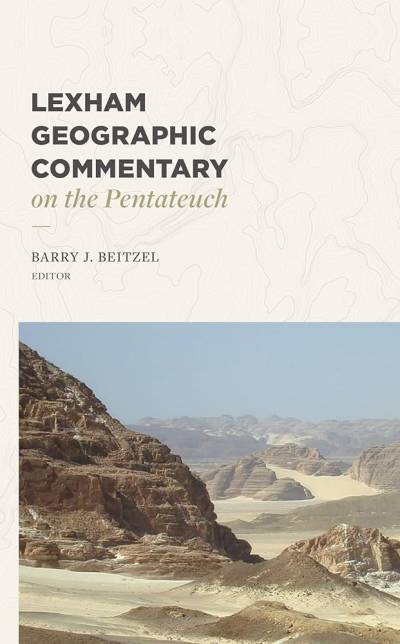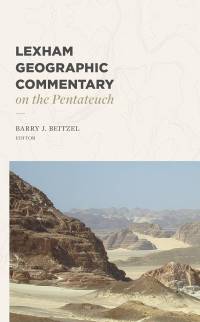I am thankful that I was asked to join an outstanding team of scholars contributing to the latest volume in the Lexham Geographic Commentary series. I noted last week one of the articles I wrote, and I wanted to do the same for my second article. I’m excited about what I learned, and I know that not everyone will be able to purchase the volume. This post will give you a little taste for the nature of what an investment in this work will provide.
The official name for my article is “The ‘Land’ Given to Abraham and His Descendants: A Geographic and Socio-spatial Analysis,” and the listed references are Genesis 15:18–21, Exodus 23:31, Numbers 32:1–33, and 34:1–12. In short, my goal was to untangle the apparently contradictory border descriptions given in various passages in the Pentateuch.
A good way to introduce my article to you, I believe, is to give my five “Key Points,” with a brief explanation for each.
1. The land where Abraham’s descendants live corresponds to the land that Abraham, Isaac, and Jacob walked and claimed (from Dan to Beersheba).
This is a helpful observation when one considers that the Lord promised Abraham the land “from the River of Egypt to the great river, the river Euphrates” (Gen 15:18). Abraham, however, lived in and traveled through only the southern portion of this area, essentially between Shechem and Beersheba. The same is true for Isaac and Jacob. When the Israelites returned from Egypt, they settled in this same area, not in northern lands such as Zobah or Ugarit, though technically they are within the territory delimited in Genesis 15.
2. By identifying the territory promised to Abraham as from the river Euphrates to the River of Egypt, the Lord provided that sufficient land would be available as the Israelites increased in size and demonstrated covenant loyalty.
A smaller nation needs less land than a larger one, and the Lord anticipated that Israel’s population would expand and so would their need for more territory. In Deuteronomy 7:22, Moses said that “the Lord your God will drive out those nations before you, little by little,” and the law required that three additional cities of refuge be set aside when Israel’s territory increased (Deut 19:8-9). Under David and Solomon, Israel’s land increased beyond the “Dan to Beersheba” holdings, and this was in keeping with God’s design. Similarly, the tribe of Reuben “occupied the land up to the edge of the desert that extends to the Euphrates River, because their livestock had increased in Gilead” (1 Chr 5:9).
3. In giving certain land to Abraham and his descendants, the Lord also excluded certain land from their inheritance.
The most obvious lands excluded from the promise are the lands of Mesopotamia and Egypt. Abraham and the people of Israel had been called by God out of those lands and given territory between them. But Israel was also excluded from land that the Lord gave to the Ammonites, Moabites, and Edomites (Deut 2:5, 9, 19). In addition, Jacob’s treaty with Laban suggests that the land of the Arameans was outside of the territory intended for Israel (Gen 31:45-54). Thus, even in the most ideal circumstances, Israel was never intended to fully occupy all the land between the Euphrates River and the River of Egypt.
4. Within the broader border descriptions given, Abraham and his descendants were to displace Canaan and his descendants and to rule over other nations.
It was God’s intention not merely to give Abraham’s descendants land but to give them land occupied by other people groups. This required that they remove them, an act of divine judgment on people who had defiled the land. The list of the ten people groups in Genesis 15:19-21 provides further definition to the land where Israel was expected to settle. Other people groups submitted to Israel’s kings and were allowed to remain in their settled lands.
5. A built-in tension exists between wider and narrower boundary descriptions of the land. This tension reflects the patriarchal travels, the possibilities of expansion, and ultimately the messianic hope.
As with my other article, my favorite point is my last, as this is where I came to see how the “contradictory” descriptions actually point to Israel’s eschatological hope. The most expansive border descriptions align neatly with prophecies in Genesis 22:18, 49:10, Psalm 2:8, 72:8, Isaiah 11:6-9, Zechariah 9:10, and elsewhere to fuel an expectation that Messiah would establish his righteous reign over all of this land for the peace of all people and the worship of their faithful God.
This gives you a taste of two of the articles in the new Lexham Geographic Commentary on the Pentateuch. I would like to write some summaries of articles written by others, but I will make no promises. If you purchase either the print (hardcover; Amazon) or digital (Logos) formats, you can pick and choose from all 47 articles as well as enjoy the maps and photos.

